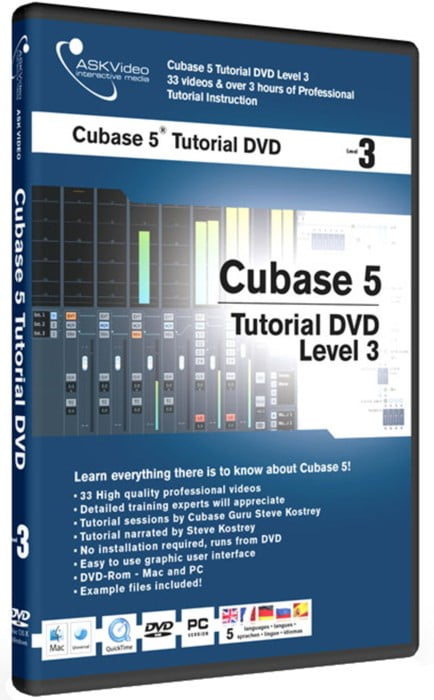

These are some of the more basic things that Cubase can do using the internal effects that come with the software, but how about external plug-ins that can manipulate the sound in totally different ways? Don’t worry too much about trying to get everything as you want it within the synth plug-in itself it’s more about using all of the tools that are available in different ways. This is a perfect way of creating screaming lead lines that, in my opinion, when played using the right synth actually sound closer to a high-gain guitar than some of the alleged guitar sounds in the HALion sampler!Įverything we’ve looked at so far might seem pretty obvious to a lot of you however, it is easy to think about the sound we make with our synthesizers as a finished article rather than using inserts and other effects as part of the sound-design process – I’m trying to encourage you to experiment with sound. For those of you thinking that adding a filter to an existing synth seems a little pointless, if you’re working with some of the older synths within Cubase the filters are a little different from what you might expect, so the addition of a regular filter is useful when programming. The MorphFilter allows for movement to be created and automated between two different filters, with a range of low-, high- and band-pass filters available to choose from. The StepFilter creates two 16×18 grids that enable rhythmic changes of filter settings with each beat, allowing for a depth change of both frequency cutoff and resonance. To add a StepFilter, open the Edit window or the mixer and in one of the insert slots select Filter>StepFilter (or MorphFilter if you prefer) and it will add the effect to your signal chain.

Now, it might seem a bit superfluous to add a filter to a synthesizer, but the StepFilter and MorphFilter do provide some movement in a sound which can be synchronised with a track to create some totally different textures.

Let’s start with a basic effect on a synth lead, such as a filter.
#CUBASE 5 SYNTH TUTORIAL PATCH#
For those who also use Reason, the ability to patch will be nothing unusual, but within Cubase, sending a synth via some of the effects and plug-ins greatly increases the capabilities of the instruments.
#CUBASE 5 SYNTH TUTORIAL HOW TO#
For those of us who grew up in hardware studios and learned how to operate the synths of the day it is easy to forget the need to physically patch instruments in the age of software synths. The purpose of this article is to develop a wider arsenal of tools for sound design – manipulating synth sounds in new ways to create previously unachievable sounds. It’s time, therefore, to take a look at some of the slightly more convoluted ways of treating synths in Cubase and how these can be transformed into new instruments and sounds. However, in Cubase 7 Steinberg didn’t introduce any major upgrades to the instrument line-up the last new synths were added in version 6.5, and I have written in-depth tutorials on both of them recently. Synths are one of my favourite topics, and Cubase certainly comes bundled with enough of them to keep me talking for hours.


 0 kommentar(er)
0 kommentar(er)
